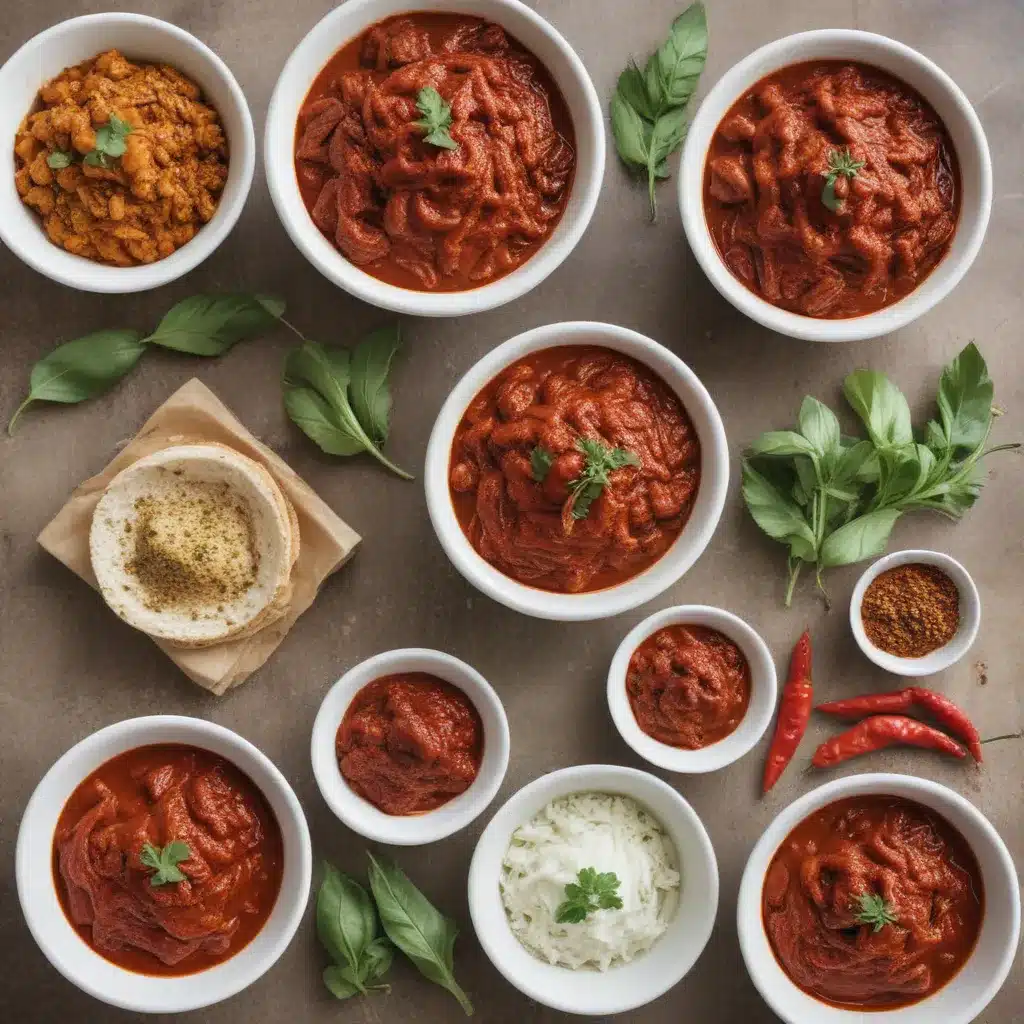
Unveiling the Secrets of Moroccan Cuisine
As I step into the bustling kitchen of our Moroccan restaurant in the heart of New York City, the air is thick with the tantalizing aromas of simmering spices and slow-cooked meats. This is where the magic happens – where the subtle complexities of North African cuisine are meticulously crafted, layer upon layer, to create dishes that transport the senses on a journey of culinary discovery.
At the center of this culinary symphony is the humble yet powerful harissa – a chile paste that serves as the foundation for many Moroccan specialties. But harissa is no one-trick pony; it is a multifaceted seasoning that can be wielded with deft precision to evoke a wide range of flavors and heat levels. Join me as we delve into the nuanced world of harissa and other North African chile pastes, exploring how these bold ingredients can elevate your cooking to new heights.
Unraveling the Mysteries of Harissa
Harissa, the quintessential Moroccan condiment, is a paste made from a blend of dried chiles, garlic, and a medley of aromatic spices. While the specific recipe can vary from region to region, and even from household to household, the core ingredients remain the same. The dried chiles provide the backbone of heat, while the garlic, caraway, coriander, and cumin lend their earthy, fragrant notes to the mix.
But what truly sets harissa apart is the interplay of these flavors, and the way they can be manipulated to achieve different levels of complexity and heat. Do you know that the type of chiles used can dramatically affect the overall character of the harissa? For instance, the smoky, slightly sweet notes of Moroccan nora peppers create a harissa that is well-suited for braised meats and stews, while the fiery bite of birds eye chiles might be better suited for dipping sauces or as a condiment for grilled dishes.
Have you ever wondered how the preparation method can impact the flavor profile of harissa? Roasting the chiles before blending them into the paste can impart a deeper, more concentrated heat, while leaving them raw can result in a brighter, more vibrant taste. The addition of ingredients like preserved lemon, sun-dried tomatoes, or even a splash of olive oil can further enhance the complexity of this versatile condiment.
Exploring the Diverse Flavors of North African Chile Pastes
While harissa may be the most well-known North African chile paste, it is merely the tip of the iceberg when it comes to the rich tapestry of flavors found in this culinary region. Did you know that each country in North Africa has its own unique take on chile-based condiments? From the tangy, herb-infused zhug of Yemen to the smoky, earthy berbere of Ethiopia, these pastes offer a world of possibilities for the adventurous home cook.
Take, for example, the makhalliya of Libya – a fiery blend of roasted chiles, garlic, and spices that is often used as a marinade or dipping sauce. Have you ever tried the _harissa-inspired harrah of Tunisia, which incorporates the brightness of lemon and the earthiness of cumin?_ These regional variations not only add depth and diversity to the culinary landscape but also offer a glimpse into the cultural traditions and flavors that have been passed down through generations.
Mastering the Art of Incorporating Harissa and Other Chile Pastes
Now that we’ve explored the rich tapestry of North African chile pastes, the real question is: how do we incorporate these bold flavors into our everyday cooking? The answer lies in learning to harness the unique properties of each paste and finding the perfect balance to complement your dish.
Do you know that harissa can be used as a marinade, a finishing touch, or even a base for stews and tagines? The key is to start with a small amount and adjust to your desired level of heat and complexity. A teaspoon or two of harissa can transform a simple grilled chicken or roasted vegetables, while a more generous application might be called for in a hearty lamb stew.
Have you ever considered using other North African chile pastes to add depth and complexity to your meals? Zhug, for instance, can be a wonderful addition to fish dishes, while berbere might be the secret ingredient that elevates your lentil soup to new heights. The possibilities are endless, and the journey of discovery is half the fun.
Embracing the Versatility of North African Chile Pastes
As I reflect on the myriad ways in which harissa and its North African counterparts can be utilized, I’m reminded of the inherent versatility of these bold, flavorful pastes. Did you know that they can be used not only in savory dishes but also in unexpected sweet applications? A touch of harissa can add a delightful contrast to a rich chocolate dessert, while the fruity notes of zhug might be a revelatory addition to a fruit salad or sorbet.
Have you ever considered incorporating these chile pastes into your everyday condiments and spreads? A harissa-spiked mayonnaise can elevate a simple sandwich, while a zhug-infused hummus might just become your new go-to dip. The possibilities are truly endless, limited only by your imagination and willingness to experiment.
So, as you embark on your culinary adventures, I encourage you to embrace the subtle heats and complex flavors of harissa and other North African chile pastes. Discover how they can transform your dishes, add depth and dimension to your cooking, and transport your senses to the vibrant markets and bustling kitchens of the Maghreb. And don’t forget to visit us at https://www.elbahia.com/ to experience the flavors of Morocco right here in New York City.


